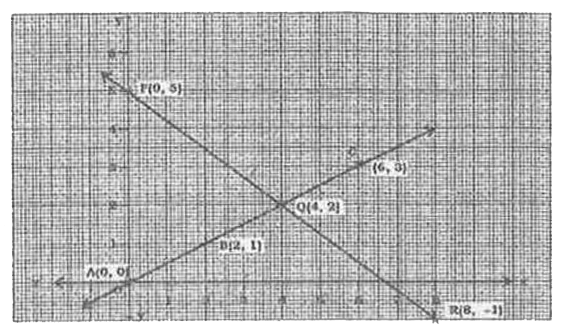Which of the following arguments are correct and which are not correct? Give reasons for your answer.
If two coins are tossed simultaneously there are three possible outcomes - two heads, two tails or one of each. Therefore, for each of these outcomes, the probability is 13Solution in Kannada
The correct Answer is:probability is not 13
12
Step by step video, text & image solution for Which of the following arguments are correct and which are not correct? Give reasons for your answer. If two coins are tossed simultaneously there are three possible outcomes - two heads, two tails or one of each. Therefore, for each of these outcomes, the probability is 1/3 by Maths experts to help you in doubts & scoring excellent marks in Class 10 exams.
Updated on:21/07/2023Topper's Solved these Questions
- PROBABILITYBOOK - CPC CAMBRIDGE PUBLICATIONCHAPTER - PROBABILITYEXERCISE - EXERCISE 14. 2 (OPTIONAL)
5 Videos
- PRACTICE QUESTION PAPER 13BOOK - CPC CAMBRIDGE PUBLICATIONCHAPTER - PRACTICE QUESTION PAPER 13EXERCISE - ANSWER THE FOLLOWING QUESTIONS
34 Videos
- QUADRATIC EQUATIONBOOK - CPC CAMBRIDGE PUBLICATIONCHAPTER - QUADRATIC EQUATIONEXERCISE - EXERCISE 10.4
5 Videos
Similar Questions
Two customers shyam and Ekta are visiting a particular shop in the same week (Tuesday to Saturday) . Each is equally likely to visit the shop on any day as on another day. What is the probability that both will visit the shop on (i) the same day ? (ii) consecutive day ? (iii) different days ?
View SolutionThe given graph represents a pair of linear equations in two variables : write how many solutions these pair of equations have

View SolutionFind the nature of the roots of the following quadratic equations. If the real roots exists, find them: (i) 2x2−2x+5=0
(ii)3x2−4√3x+4=0
(iii)2x2−6x+3=0
View SolutionWhich of the following arguments are correct and which are not correct? Give reasons for your answer.(i) If two coins are tossed simultaneously there are three possible outcomes two heads, two tails or one of each. Therefore, for each of these outcomes the probability is 1/3(ii)if a die is thrown, there are two possible outcomes, an odd no. or an even no. Therefore ,the probability of getting an odd no. is 1/2.
View SolutionThree coins are tossed simultaneously 200 times with the following frequencies of different outcomes: Outcome: 3 heads 2 heads 1 head No head Frequency: 23 72 77 28 Find the probability of getting: (i) three heads (ii) two heads and one tail (iii) at least two heads
View SolutionExamine, If two coins are tossed at the same time, there are 3 possible outcomes two heads, two tails, or one of each. Therefore, for each outcome, the probability of occurrence is 1/3 .
View SolutionThree coins are tossed simultaneously 200 times with the following frequencies of different outcomes: Outcome: 3 heads 2 heads 1 head No head Frequency: 23 72 77 28 Find the probability of getting: (i) three heads (ii) two heads and one tail (iii) at least two heads
View SolutionWhen we toss a coin, there are two possible outcomes-heat or tail. Therefore, the probability of each outcome is 12. Justify your answer.
View Solutionनीचे लिखे तर्क सत्य है अथवा असत्य ? सकारण उत्तर दीजिए -
यदि दो सिक्कों को एक साथ उछाला जाता है, तो इसके तीन संभावित परिणाम - दो चित्त, दो पट या प्रत्येक एक बार है। अतः इनमें से प्रत्येक की प्रायिकता 13 है।
View SolutionWhich of the following arguments are correct and which are not correct? Give reasons for your answer.
If two coins are tossed simultaneously there are three possible outcomes - two heads, two tails or one of each. Therefore, for each of these outcomes, the probability is 13
View SolutionWhich of the following arguments are correct and which are not correct? Give reasons for your answer.
If a die is thrown, there are two possible outcomes - an odd number or an even number . Therefore, the probability of getting an odd number is 12
View SolutionWhich of the following arguments are correct and which are not correct? Give reasons.
i) If two coins are tossed simultaneously there are three possible outcomes - two heads, two tails or one of each. Therefore, for each of these outcomes, the probability is 13
ii)If a die is thrown, there are two possible outcomes - an odd number or an even number. Therefore, the probability of getting an odd number is 12
View SolutionWhich of the following arguments are correct and which are not correct? Give reasons.
i) If two coins are tossed simultaneously there are three possible outcomes - two heads, two tails or one of each. Therefore, for each of these outcomes, the probability is 13
ii)If a die is thrown, there are two possible outcomes - an odd number or an even number. Therefore, the probability of getting an odd number is 12
View SolutionWhich of the following arguments are correct and which are not correct? Give reasons for your answer.(i) If two coins are tossed simultaneously there are three possible outcomes two heads, two tails or one of each. Therefore, for each of these outcomes the probability is 1/3(ii)if a die is thrown, there are two possible outcomes, an odd no. or an even no. Therefore ,the probability of getting an odd no. is 1/2.
View SolutionWhen we toss a coin, there are two possible outcomes-head or tail. Therefore, the probability of each outcome is 12. Justify your answer.
View SolutionThree coins are tossed simultaneously 200 times with the following frequencies of different outcomes: Outcome: 3 heads 2 heads 1 head No head Frequency: 23 72 77 28 Find the probability of getting: (i) three heads (ii) two heads and one tail (iii) at least two heads
View Solution
